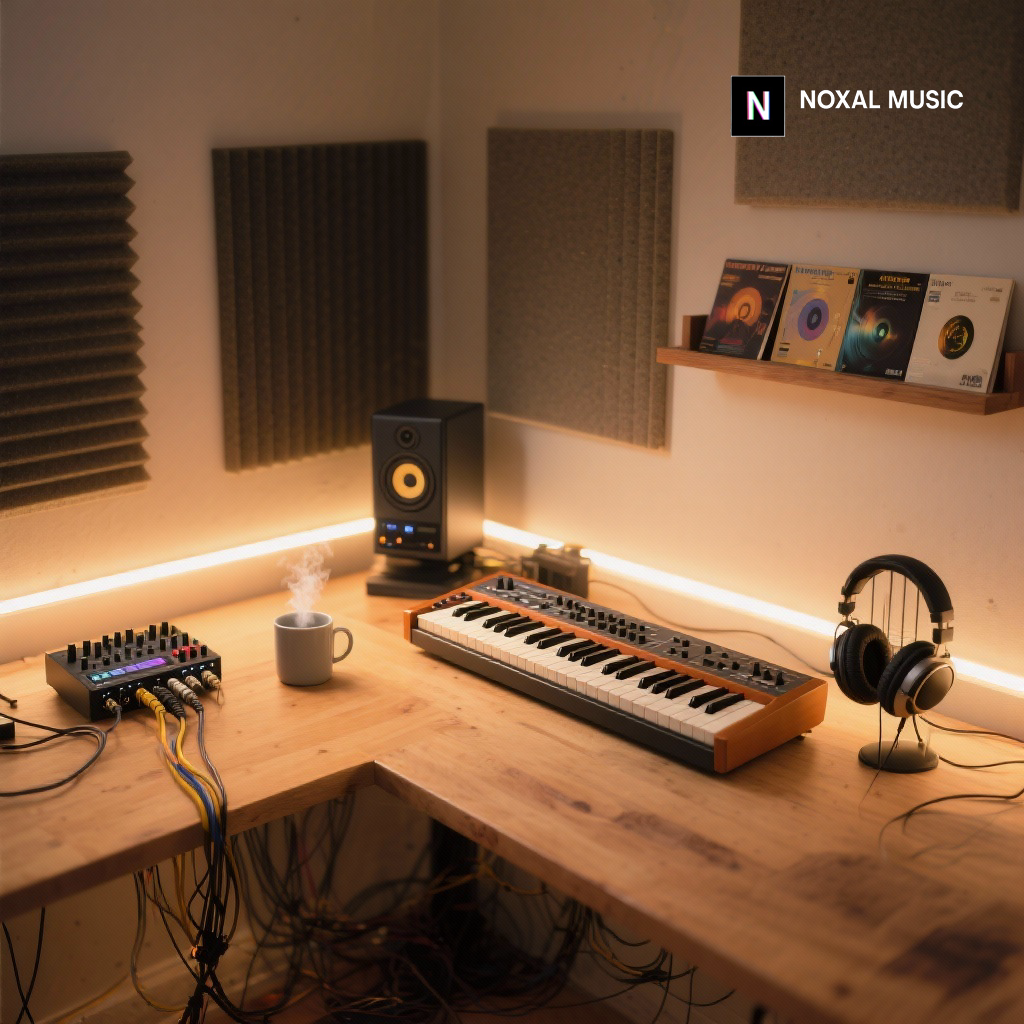Discover the hidden gems of electronic music history that often get overlooked. Explore underrated records, their production insights, and how they continue to influence contemporary sound design and music production techniques.
Key Takeaways
- Underrated records can provide significant insights into electronic music’s evolution.
- Listening actively to synth textures enhances production skills.
- Exploring lesser-known tracks can reveal innovative sound design techniques.
- Understanding the context and constraints faced by past artists is crucial for growth.
- Bringing together a community around these discoveries can reignite passion for music production.
Estimated Reading Time
7 minutes
Join Our Newsletter
Table of Contents
The Hidden Gems: Why “Underrated Records in Electronic Music History in Music Production” Deserve Our Attention
When we talk about “underrated,” we’re not necessarily discussing commercial failure. Some records are critically lauded in niche circles but never gained broader recognition. Others could be a forgotten B-side or experimental release. What unites these gems is their significant, often disproportionate influence on subsequent artists, showcasing bold sonic innovations despite lacking mainstream success.
At Noxal, we believe exploring these hidden gems allows for a richer connection with music history. It’s akin to being a sonic archaeologist, uncovering artifacts that illuminate the techniques, philosophies, and constraints of their corresponding eras. Such records often harbor the seeds of future genres, demonstrating genre-bending approaches years before they became the norm. For an aspiring producer or electronic music enthusiast, overlooking this rich historical context is akin to disregarding essential pieces of the puzzle that define our craft.
Beyond the Obvious: Listening with a Producer’s Ear to Synth Textures
One profound takeaway from delving into these lesser-known works is the absolute necessity of listening intently to synth textures. This isn’t just passive listening; it’s a dissection process. How was that pad created? Is there an analog warmth from a classic Moog or the brittle edge of an early FM synthesizer? What modulation gives that bassline its unique movement?
Listening actively offers profound insights into production choices. I often spent hours troubleshooting individual elements, seeking to understand how they fit into the overall mix. What I learned is the depth residing within seemingly simple compositions often results from resourceful and creative approaches to sound design.
Case Studies in Sonic Innovation: Unearthing Production Gold
Let’s explore some representative examples of records that showcase hidden brilliance, illustrating the principles behind their innovative sound design and electronic music production techniques.
1. Modular Dreams – “Cosmic Drift” (1992)
Imagine a hypothetical record from the early 90s, existing in a space between ambient, proto-techno, and avant-garde electronica. “Cosmic Drift” is a fictional example that gained cult status among a select few producers for its atmospheric soundscapes and intricate rhythmic programming.
**Production Insight:** The brilliance here lies in the masterful layering of digital synthesis with processed field recordings. While many explored glossiness, this artist revealed the unique character of synths like the Kawai K1, coaxing crystalline pads from simple waveforms. Soon after diving into “Cosmic Drift,” listeners might realize the inspiration behind modern sound design methods.
2. Urban Circuit – “Gridlock” EP (1987)
Take a step back into the raw energy of Urban Circuit’s “Gridlock” EP, released by a small label. It predates much of the acid house wave yet possesses a fierce, hypnotic intensity.
**Production Insight:** This record exemplifies the power of pushing rudimentary drum machines. “Gridlock” likely employed the crunch of a Korg RZ-1, augmented by heavily filtered vocal snippets. The raw production here demonstrates that character often trumps fidelity, sparking imagination amongst producers who embrace the limitations of their gear.
3. Aura Decay – “Resonance Cascade” (2004)
Fast forward to the early 2000s, “Resonance Cascade” emerges as a challenging yet gratifying listen, exploring territories that blend harsh digital noise with organic textures.
**Production Insight:** Here, genius lies in merging digital synthesis with manipulated recordings. Tracks present a landscape of dynamic shifts and unexpected juxtapositions. Avant-garde works like this teach listeners to find innovation in perceived noise, reshaping beauty and harmony as the ultimate result of daring creativity.
The Master’s Perspective: Connecting with Music History and the Artist’s Intent
Connecting with music history through underrated records is a vital part of our growth as artists and listeners. A conversation I had with a renowned artist underscored this truth: “The greatest education for a producer isn’t just the plugins; it’s understanding *why* the old masters made certain choices.”
This perspective aligns with Noxal’s mission to emphasize that production insights are as much about technical skill as they are about sharing the stories behind the sounds. By delving into forgotten tracks, we engage with the artistry that transcended commercial boundaries.
Why This Matters to Noxal: Our Journey into Sonic Archeology
At Noxal, we celebrate the art and science behind synthesizers and electronic sounds. Our exploration of sonic archeology informs our understanding of the present. By uncovering underrated records in electronic music history, we appreciate the evolution of sound design techniques, and the enduring power of creative inspiration.
We encourage proactive listening and the development of a critical ear. The history of electronic music is a living archive, waiting to be explored, allowing us to reignite our passion for creative sound.
Conclusion: The Endless Frontier of Sound
The quest for underrated records in electronic music history offers an endless, rewarding journey. Great art doesn’t always come with recognition but often germinates in quiet corners before the world catches up. By tuning our ears to these hidden sounds, we pay homage to electronic music pioneers and arm ourselves with deeper understanding for our production endeavors.
So when you seek creative inspiration, remember to bypass the mainstream charts for a moment. Dive deep into the forgotten; you might just find a record that reshapes your perspective and fuels your passion anew. Noxal is here to guide you through these sonic landscapes, celebrating every bleep and bloop along the way.
Frequently Asked Questions
Q: How can I find underrated electronic music records?
A: Explore platforms like Bandcamp or Discogs, follow niche YouTube channels, and engage in discussions on forums dedicated to electronic music.
Q: Why should I care about the history of electronic music?
A: Understanding the historical context of electronic music helps you appreciate current trends and the evolution of production techniques.
Q: What is sonic archeology?
A: Sonic archeology involves exploring older, often underrated musical works to glean insights into sound design and production techniques that influence contemporary music.
As you embark on your quest for hidden gems, just remember: If your synths start talking back, it’s probably time to turn them off. After all, there’s only so much noise a producer can handle before they start looking for a musical exorcist!

